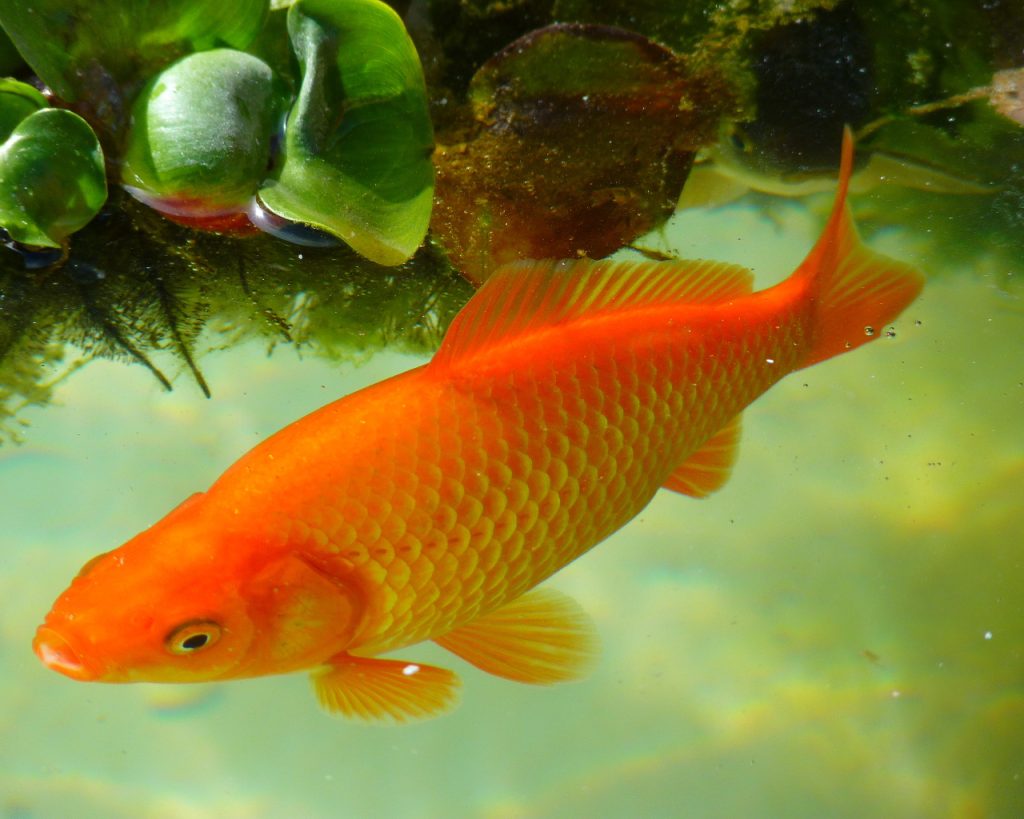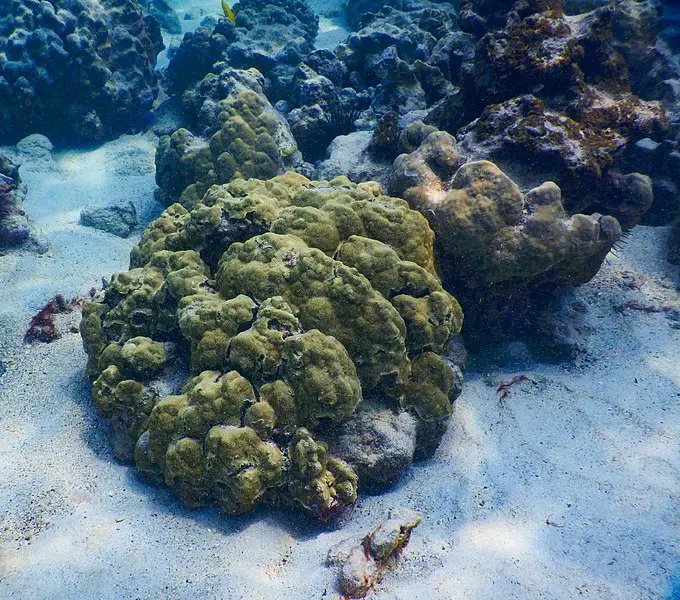Maintaining a healthy and visually appealing fish tank can be a rewarding and enjoyable hobby. However, discoloration in the water can be a cause for concern.
Suppose you’ve noticed that your fish tank water has turned orange.
In that case, there may be several potential causes, such as high levels of dissolved organic matter, algae blooms, iron or mineral deposits, or medications and additives.
In this article, we’ll explore some common reasons why your fish tank water may turn orange and offer tips for addressing the issue and maintaining a healthy underwater ecosystem.
Potential Causes of Orange-Tinted Fish Tank Water
When your fish tank water has an orange hue, there could be several potential causes, including:
- High levels of dissolved organic matter: One of the most common reasons for orange-tinted water in fish tanks is the presence of high levels of dissolved organic matter. This can come from various sources, including fish waste, uneaten food, and decaying plants. Over time, this organic matter accumulates in the water, leading to a brown or orange tint.
You can improve your tank’s filtration and water circulation and perform regular water changes to remove excess organic matter. In addition, adjust your feeding habits and consider removing uneaten food after a few minutes to prevent it from decaying in the water.
- Algae bloom: Algae growth is another potential cause of orange-tinted water in fish tanks. Algae blooms can occur due to excess nutrients and sunlight, leading to a green or brownish-orange color in the water.
Consider reducing the amount of light your tank receives, adjusting your feeding habits, and improving filtration and water circulation to reduce excess nutrients in the water. Additionally, adding live aquatic plants to your tank can help absorb extra nutrients and compete with algae for resources.
- Iron or other mineral deposits: High levels of iron or other minerals may be present that can discolor the water depending on your water source. Iron deposits can often cause a rust-colored or orange tint in the water.
Consider using a water conditioner or filter to remove excess minerals. Additionally, you can test your water to determine the source of the issue and adjust accordingly.
- Medications or additives: Certain medications and additives used in fish tanks can also cause the water to change color. For example, some medications used to treat bacterial infections can turn the water brown or orange.
- Importance of testing the water parameters: In addition to investigating the specific cause of the orange-tinted water, it’s essential to test the water parameters regularly to ensure that they are within the appropriate range for the fish and plants in the tank. Parameters such as pH, ammonia, nitrite, and nitrate can significantly impact the health and well-being of aquatic inhabitants.
- Recommended frequency for water changes: While it’s essential to perform regular water changes to remove excess organic matter and other contaminants, the frequency of water changes can vary depending on the size of the tank, the number of fish, and the filtration system. It’s recommended to perform a 10-20% water change every week or every other week, depending on the tank’s specific requirements.
- The importance of cleaning the filter: A dirty or clogged filter can lead to poor water quality, contributing to orange-tinted water. It’s recommended to clean the filter regularly to remove any debris, excess organic matter, or other contaminants that may have accumulated. However, cleaning the filter sparingly is essential as this can disrupt the beneficial bacteria that help break down waste in the tank.
- The benefits of adding aquarium salt: Aquarium salt can be a beneficial addition to a fish tank, as it can help to reduce stress, prevent disease, and promote healthy gill function in fish. However, using the right amount of salt is essential, as adding too much can harm the fish or plants in the tank. Adding one tablespoon of aquarium salt per five gallons of water is recommended.
Research the potential side effects of any medications or additives you use in your tank and consider alternative treatments if necessary.
By understanding the potential causes of orange-tinted water in fish tanks and taking steps to address them, you can maintain a healthy and visually appealing underwater ecosystem for your fish to thrive in.
Investigating and Treating Orange-Tinted Fish Tank Water
If you’ve noticed that your fish tank water has turned orange, there are several steps you can take to investigate and treat the issue. Here are some potential solutions:
- Assess the Likelihood of Each Possible Cause: Start by assessing the likelihood of each of the possible causes of orange-tinted water in your fish tank. Consider factors such as the feeding habits of your fish, the amount of light your tank receives, and the quality of your water source. This can help you determine the most likely cause of the issue.
- Test for Possible Causes: To further investigate the issue, you should conduct some tests to determine the specific cause of the discoloration. For example, you can test the water quality to determine the water’s levels of organic matter, nutrients, and minerals. You can also test for the presence of bacteria or other organisms contributing to the issue.
- Treat the Issue: Once you’ve identified the likely cause of the orange-tinted water in your fish tank, you can address the issue. Here are some potential treatment options:
- High levels of dissolved organic matter: If excess organic matter is the likely cause of the issue, you can improve the filtration and water circulation in your tank and perform regular water changes to remove excess organic matter. Adjust your feeding habits and consider eliminating uneaten food after a few minutes to prevent it from decaying in the water.
- Algae bloom: If algae growth is the likely cause of the issue, you can try reducing the amount of light your tank receives, adjusting your feeding habits, and improving filtration and water circulation to reduce excess nutrients in the water. Additionally, adding live aquatic plants to your tank can help absorb excess nutrients and compete with algae for resources.
- Iron or other mineral deposits: If excess minerals are the likely cause of the issue, you may need to consider using a water conditioner or filter to remove excess minerals. Additionally, you can test your water to determine the source of the issue and adjust accordingly.
- Medications or additives: If medications or additives are the likely cause of the issue, you should research the potential side effects of any medications or additives in your tank and consider using alternative treatments if necessary.
By taking these steps to investigate and treat the issue, you can maintain a healthy and visually appealing fish tank for your fish to thrive in.
Additionally, it’s important to remember the importance of regular maintenance and monitoring to prevent similar issues from occurring in the future.
In conclusion, orange-tinted water in your fish tank can indicate various underlying issues.
By understanding the potential causes and taking steps to address them, you can maintain a healthy and visually appealing underwater ecosystem for your fish to thrive in.
Remember to regularly monitor and maintain your tank to prevent similar issues from occurring in the future.
FAQ
How can I tell if the orange-tinted water in my fish tank is due to iron or mineral deposits?
If you suspect that iron or mineral deposits may be causing the orange tint in your fish tank water, you can take a few steps to investigate. First, you can test your water using an aquarium water testing kit to measure iron levels and other minerals. If the test confirms the presence of high levels of iron or other minerals, you may need to use a water conditioner or filter to remove the excess minerals.
What should I do if none of the recommended treatments are working to address the orange-tinted water in my fish tank?
If you’ve tried the recommended treatments for orange-tinted water in your fish tank, such as improving filtration, reducing light exposure, and adjusting feeding habits, but the water is still discolored, it may be time to seek additional help. Consult an experienced aquarium specialist or veterinarian to diagnose and treat the issue. It’s also important to monitor water quality and adjust as needed to prevent the issue from worsening.
Can orange-tinted water harm my fish?
In general, orange-tinted water in a fish tank does not harm fish or other aquatic inhabitants. However, the underlying cause of the discoloration, such as excess organic matter or nutrient levels, can harm fish if left untreated. It’s important to address the cause of the discolored water to maintain healthy water quality for the well-being of your fish and other aquatic inhabitants.


